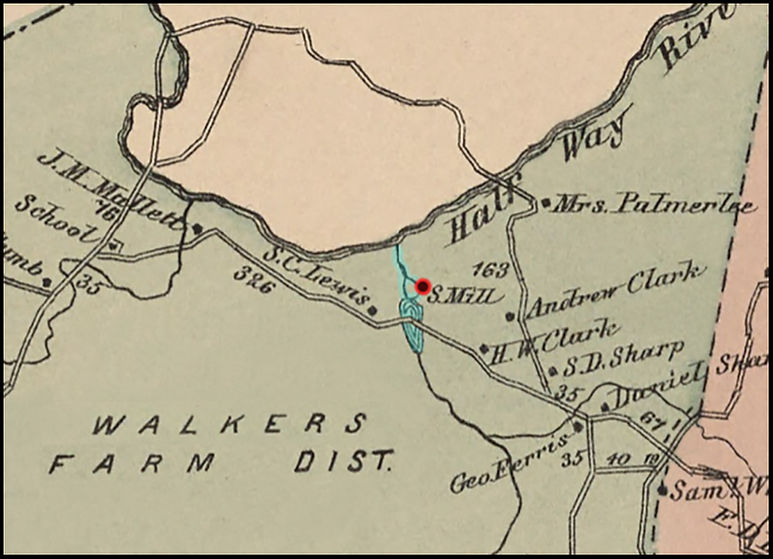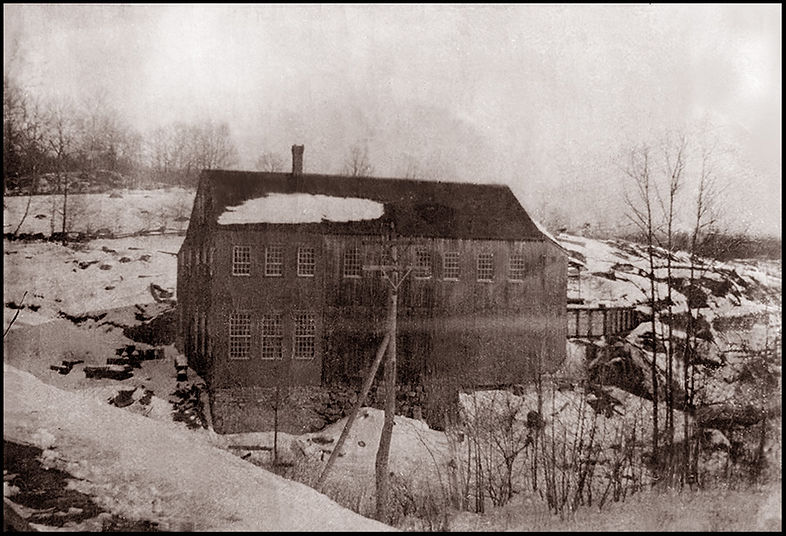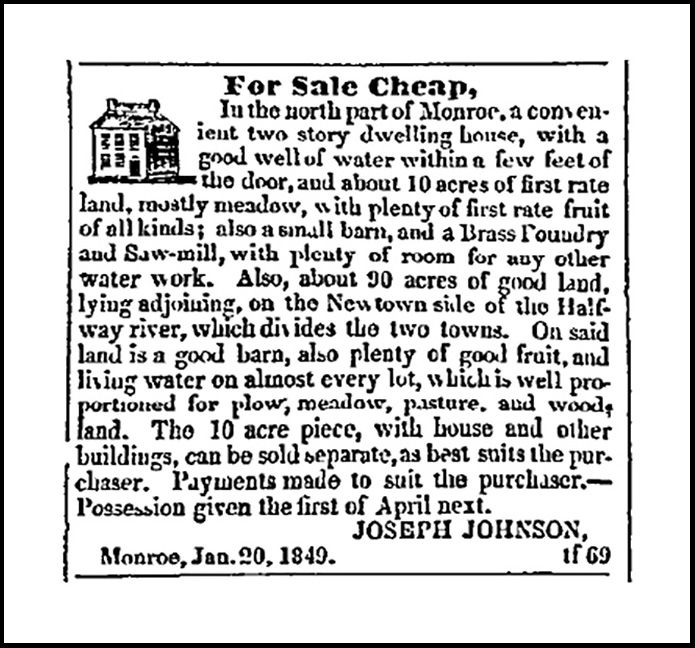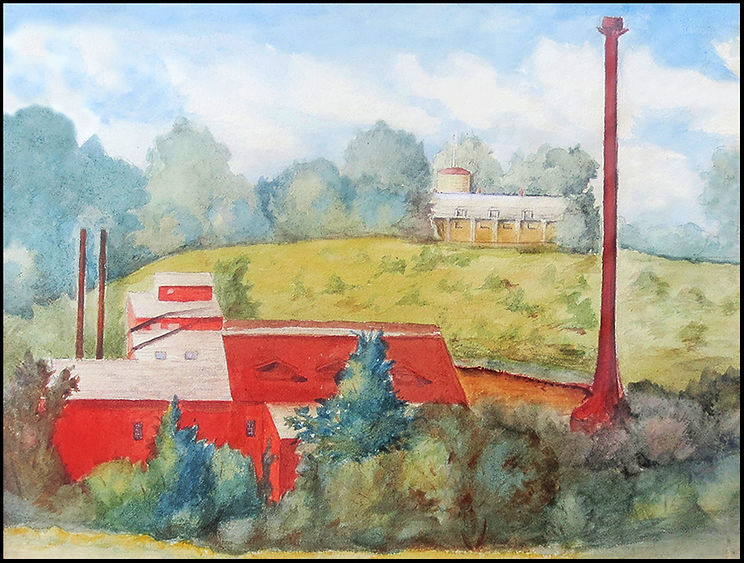The Conflagration (1900)
Welcome back, Monroe history lovers. This week’s history takes us to the site of a former sawmill and foundry in the Walker’s Farm district. Never heard of it, you say? Well, our first supporting image will take care of that problem. It’s a snippet from the 1867 Beers Atlas Map of Monroe. I’ve highlighted the sawmill and the Turkey Roost Brook that once powered it. Still having a bit of trouble getting your bearings? Okay, then. The precise location is on Hammertown Road, right at the entrance to the Fairfield County Fish & Game Protective Association. Let’s head over to the north-central section of Monroe to learn some new old history!
Our earliest residential map of Monroe from 1856 shows this sawmill and brass foundry was owned by Joseph Johnson. Our second supporting image shows the mill standing beside the railroad tracks circa 1895. Our third supporting image is a newspaper ad from 1849 when the motivated Mr. Johnson tried to sell his land, which included his dwelling house and the entire mill/foundry enterprise. It would be nearly another 40 years before the railroad extension from Botsford to Derby cut across his land, parallel to the Halfway River, its centerline of flow defining the shared town border between Monroe and Newtown.
The mill was purchased by Sherman Botsford of Newtown, who was an accomplished carpenter by trade. Owning a lumber resource such as a sawmill was certainly a compliment to his carpentry business. Two of his sons, Edward J. and Howard S. Botsford, grew up at the sawmill and followed in their father’s footsteps in the carpentry trade. In 1895, the enterprising brothers had the idea of expanding the foundry, and began buying up tons of scrap iron to be melted down for the manufacture of cast iron horse-drawn plows. They began manufacturing the Wakeley brand plow design under license and saw opportunities for improvements. They set out to develop a superior plow of their own design which they referred to as the “Number 97.”
The brothers’ plow business was a success, and public demand exceeded their expectations. By 1897, their plow output had already amounted to over four tons. It seemed as though nothing could stop their good fortune, but all of that changed on the afternoon of Thursday, April 26th 1900, when errant sparks from the foundry’s chimney ignited the wooden roof. By the time the brothers discovered the fire, the entire roof was aflame, and no effort could save their business. The building was soon engulfed in flames and collapsed into a burning heap. It was a complete loss. There was no insurance on the Botsfords’ business and the damages amounted to $3,000.00. That’s over $150,000.00 in today’s money. Today, only the stone foundation’s remains are seen beside the brook, a quiet testimony to the tragic events of that day so long ago.
The brothers were in no way to be blamed for the disaster. They did everything they possibly could to halt the spread of the fire, but there were high winds fueling the flames and diminishing their efforts. The winds carried the sparks to the south across Hammertown Road and ignited the woods. Soon, the entire hillside was ablaze with over 100 acres of wood and pasture land burned over. Any remains of Edward L. Smith’s former short-lived copper smelting plant were burned, as was his once-famous clubhouse and water tower perched atop the crest of the hill to the west. Our fourth supporting image is a watercolor painting of the copper smelting plant when it first opened. The clubhouse and its water tower are seen on the hilltop in the distance. The clubhouse, by the way, was eventually rebuilt and can be seen today at 16 Percheron Drive.
I hope you appreciate this week’s historical spotlight on the Botsford’s sawmill and foundry fire of 1900. You’ll be happy to learn that despite their great loss, the Botsfords soldiered on successfully with their carpentry business, never again returning to the potential dangers of manufacturing cast-iron plows. Please share this post with your family and friends, and thank you sincerely for your continued support and interest in Monroe’s rich history. Until next time. Sometimes, a single spark can ruin your entire day, but like the Botsfords, from the ashes we too shall rise.
Regards,
Kevin Daly
Historian, Monroe Historical Society
www.monroecthistory.org
Our Past is Always Present




